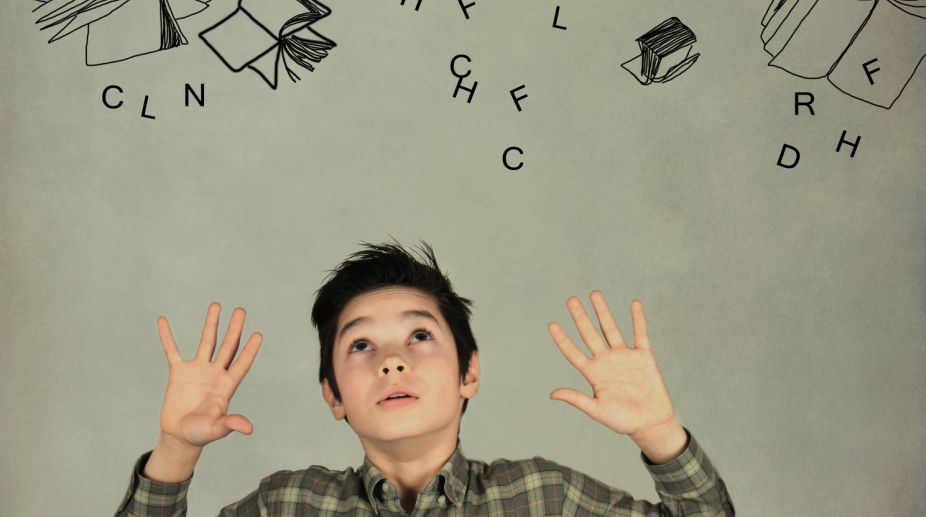MCD’s Divyang Mahotsav commences in the city
The first Divyang Mahotsav of Municipal Corporation of Delhi (MCD) kicked off here on Friday.

(Photo: Getty Images)
The Greek word dyslexia comprises four syllables, as in dys-lex-i-a. This is the simple breakdown of a word which, over the centuries, has perplexed neuroscientists, who even today, are stretching their intellect to the furthest limits, in a bid to find the solution to a problem involving a certain percentage of school-going children. The crux of the problem appears to be entangled with the most complex organ of the human body – the brain. But that is only the beginning.
Dyslexia is a learning difficulty that disrupts reading, spelling or writing, and so seriously affects these abilities when a child should be enjoying the wonders of education.
Advertisement
The National Health Service of England, launched in 1948, states that unlike disabilities in learning a persons intelligence is not affected, when observed with symptoms of dyslexia. An estimated one in 10 or 20 people in the UK, have some degree of dyslexia, which can be a lifelong problem presenting challenges on a daily basis.
Advertisement
However, support is available, for school going children, to improve reading and writing skills; we must realise, however, that affected adults also need support, especially at their work place.
The treatment for dyslexia encompasses consideration and understanding from teachers or employers and a systemic approach is necessary.
Paradoxically, people affected by this disorder have good skills in problem solving or creative thinking. The first step a parent must take is to interact with the childs teacher or an educational psychologist, who is within the purview of a special needs coordinator. To aid a child or an adult, technical inputs such as word processors and electronic organisers are recommended by psychologists. For adults, support is required by employers who need to make reasonable adjustments at a work place by allowing extra time for certain tasks.
Before we learn about efforts of neuroscientists who are conducting research on comparative studies of the brain, let us trace this disorders past and those who identified it; people who were helpless because of the brain playing a major role in this disorder.
For all intents and purposes, the study of the brain, related to dyslexia, has indeed proved to be a daunting pursuit, and has slowed down the level of progress for treatment.
Identified by Oswald Berkhan in 1881, the term dyslexia was later coined in 1887, by Rudolf Berlin, an ophthalmologist in Germany. He used the term to refer to the case of a young boy who had a severe impairment when learning to read and write, although he showed normal intellectual and physical abilities in other respects. In general terms that is exactly what dyslexia is all about.
In 1896, W Pringle Morgan, a British physician, published a similar description of dyslexia and its allied disorders. It was in 1925, when Samuel Orton, a neurologist, realised that these children had a problem linking visual images with words or letters.
This observation was strengthened in the 1970s when a hypothesis emerged that dyslexia is caused by a deficit in phonological processing, such as CAT, when individuals have difficulty connecting letters, K, ae and t, with the visual letters that combine to form a word.
What is now being studied is that dyslexia may be less of a difficulty with language processing and more of a problem with the brain rewiring itself or orienting the relevant hemisphere of the brain with sounds of letters and related images, to enable a lucid understanding of words and sentences. In this context, the flexibility of the brain is remarkable because as new words are learnt involving different mental skills, the brain adapts itself to access information by creating new connections between neurons.
The brains greatest ability is the manner by which it rewires itself, and this is known as plasticity.
Individuals with dyslexia appear to have less plasticity in their brains, and the journal Neuron has written that scans of some brains with dyslexia were observed with less plasticity compared to those not affected by the disorder. MRI scans displayed the rigidity of brains with dyslexia, reflecting the section of the brain which is related to reading and allied images. This has revealed that dyslexic people can struggle when reading a passage that entails an exercise in comprehension or memorising a poem; the inability to visualise the content of a poem like Jack Sprat or even Jack and Jill, may disconnect the child entirely from the words of the passage. Learning a foreign language can be incredibly demanding for the same reason.
Researchers today believe the problem to be more of a language processing disorder.
Neuroscientist John Gabrieli intends to initiate a research, by studying scans of brains of infants and younger children, to try and trace the earliest stages of dyslexia. Guinevere Eden, of Georgetown University, says that seeing dyslexia as the brain trying to adapt itself is groundbreaking as an interpretation of this disorder.
Eden also warns of the terrible struggle, both children and adults have to endure when confronted by dyslexia and once again, its the world of science that will be looked upon for that cure.
Advertisement